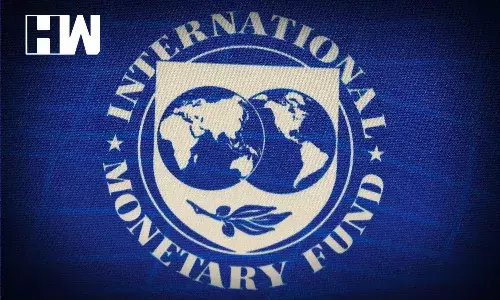New Delhi: Through the state-provided food handouts, India has eliminated extreme poverty and brought down consumption inequality to its lowest levels in 40 years, as per the new working paper published by International Monetary Fund (IMF).
The IMF working paper is authored by economists Surjit Bhalla, Arvind Virmani, and Karan Bhasin. The paper states that the proportion of people living in extreme poverty, at less than 1%, remained steady even during the pandemic on the back of “in-kind” subsidies, especially food rations.
This study comes out at a time when many global reports are pointing out the widening gap between the rich and poor in Asia’s third-largest economy, while studies on the economic shocks of the Covid-19 pandemic vary in their conclusions.
The number of people living in extreme poverty as per the World Bank as living on US$1.9 or less in purchasing power parity (PPP) terms – was 0.8% of the population in the pre-pandemic year 2019, stated the IMF paper, published on April 5, 2022.
Food rations were ‘instrumental and also ensured that extreme poverty did not increase and “remained at that low level” in the pandemic year 2020, the study found. PPP is a metric that equalizes the buying power of different currencies to make comparisons easy.
The authors stated that results also demonstrate the social safety net provided by the expansion of India’s food subsidy program absorbed a major part of the pandemic shock. They also concluded that such back-to-back low poverty rates suggest India has eliminated extreme poverty.
According to the authors, the effects of subsidy adjustments on poverty sets their study apart. The results are “striking”, they said in the working paper. Food handouts curbed poverty by acting like “cash transfers”.
IMF states that its working papers describe research in progress, and are published to elicit comments.
“The food subsidy is 5kg per person. In terms of a household, that would be about 25 kg a month. Now if you convert that into prices, that would come to about ₹750. This is not an insignificant amount for really poor households,” said Pronab Sen, former chief statistician of India.
“But I cannot imagine ₹750 changing the inequality part of it. Absolute poverty in terms of hunger…yes, but inequality is a different ballgame. ₹750 is just not enough to move the needle on inequality,” Sen added.
The authors noted that many of the previous studies and measures of poverty and inequality did not account for the role of food handouts. “These (new) estimates include, for the first time, the effect of in-kind food subsidies on poverty and inequality,” the paper stated.
As an independent media platform, we do not take advertisements from governments and corporate houses. It is you, our readers, who have supported us on our journey to do honest and unbiased journalism. Please contribute, so that we can continue to do the same in future.

